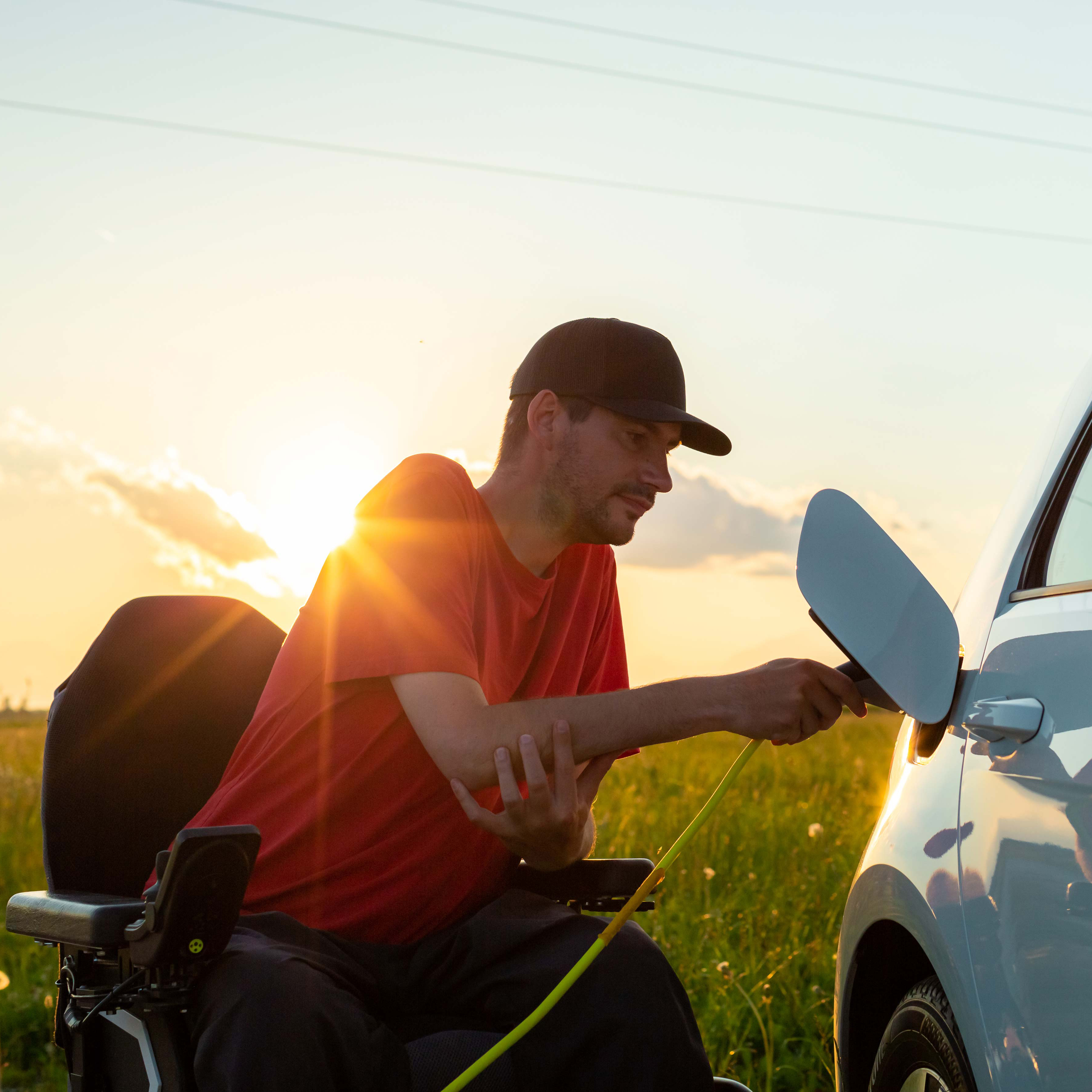Why electric mobility needs a wake-up call

As discussed in our previous press release, now that cars are increasingly becoming electric vehicles (EVs), mobility for disabled people should follow. But this is proving to be a difficult transition. Users of vehicle adaptations identified the lack of accessible charging as the most pressing problem. Still, even if this requires a massive European effort, there’s a straightforward solution. Simply put, we need more charging points and they need to be accessible. Unfortunately, the electric transition faces other more complicated issues.
What are the problems?
EMG surveyed its members, to identify which problems they face when making electric vehicles accessible. Some of these problems are auto industry-wide, and could hinder disabled people from using EVs, like:
- The strict safety protocols when converting high voltage vehicles
- Conversion companies need to reschool and retool to work on EVs
- The lack of (accessible) charging creates a need for private charging
No big surprises here. It’s still early days in the breakthrough of EVs, so these new and highly computerised cars should be expected to require a steep learning curve. And it’s no shock either that the electric infrastructure isn’t up to date yet.
What are the complex problems?
The EMG members also identified other issues, problems that are less obvious to the public. Most relate to the work that needs to be performed on the EVs, and are hindered by issues like:
- Lack of approvals from the manufacturers
- The size and location of the batteries make many conversions impossible
- Power consumption of the conversions limit the EVs range
- EVs are already heavier than fossil-powered cars, so the extra weight of modifications can take vehicles over their maximum Gross Vehicle Weight (GVW)
- EVs are usually more expensive, but so are EV conversions, making them even less affordable
This is when things become complicated, because none of these issues can be fixed easily. Let’s be realistic; it’s understandable that manufacturers don’t like outsiders messing with their electronics. An EV’s propulsion is obviously electric, but the gas pedal, regenerative braking, power steering, etc. are also electronically controlled. Therefore, many adaptations no longer have mechanical solutions, they need to be modified within the car’s electronics and wiring. But if car converters make changes in the EV’s brain, can they guarantee that this won’t affect other functions? And even if they do guarantee this, can manufacturers afford to trust their judgement? It’s easier to just lock everybody out of the electronics and ban these modifications.
Floor modifications
Many adaptations, like special seats, lifts and wheelchair tie-downs, require cutting and drilling into the floor. But because the batteries are located there, EV floors are no-drill zones. Furthermore, many conversions lower the floors to increase interior height without raising the roof. This lowers wheelchair users to eye level with other passengers and the car’s windows. But if the floors house batteries, manufacturers don’t want anybody to cut there.
If electronic adaptations and floor modifications are forbidden by manufacturers, many conversions are outlawed. This effectively disqualifies many disabled people from using EVs. Obviously, this can never be the intention of any party involved. So, a solution must be found.
Are there solutions?
The easiest solution is not very pretty. Because, if you can’t convert EVs, just keep using fossil-fuelled vehicles as long as possible. This is a short-term fix at best. Cars with internal combustion engines are becoming fossils. Cities and countries are increasingly banning them. Besides, neither disabled people, manufacturers nor conversion companies want this fix.
But what can be done?
As long as manufacturers and conversion companies are willing to work together, solutions can be found. For example, in the early days of the lowered floors, manufacturers didn’t want conversion companies to cut into their floors, chassis and gas tanks. Such actions initially resulted in voidance of the factory warranty. Fast forward 30 years though, and major manufacturers allow many conversions by EMG members with retention of the full factory warranty. A similar situation needs to be reached, and it cannot take decades this time.
How can this be achieved?
In this Electric Revolution, manufacturers have huge challenges to overcome, which may distract attention away from electric mobility for disabled people. Nevertheless, manufacturers also want proper solutions. So, disabled people should form a united front with vehicle conversion companies, to create a united voice. They need an ambassador who can discuss concepts and compromises with these multinationals. But is there such an ambassador? Probably not, but EMG is starting to realise that it should become this voice.
EMG members traditionally offer technical solutions. But now that many disabled people are getting locked out of EVs, EMG must leave its technical comfort zone. It’s time to address manufacturers and rule makers to discuss solutions. Manufacturers’ worries about companies modifying their electronics definitely aren’t unjustified, but put the smart people from both sides together, and solutions are achievable. Simultaneously, rule makers should be addressed. Many countries promote EVs with tax advantages and subsidies. So, shouldn’t the same benefits be extended to conversions? These are some of the issues to address, and EMG is gearing up for this new role.
European Mobility Group, May 2022
For further information contact [email protected]